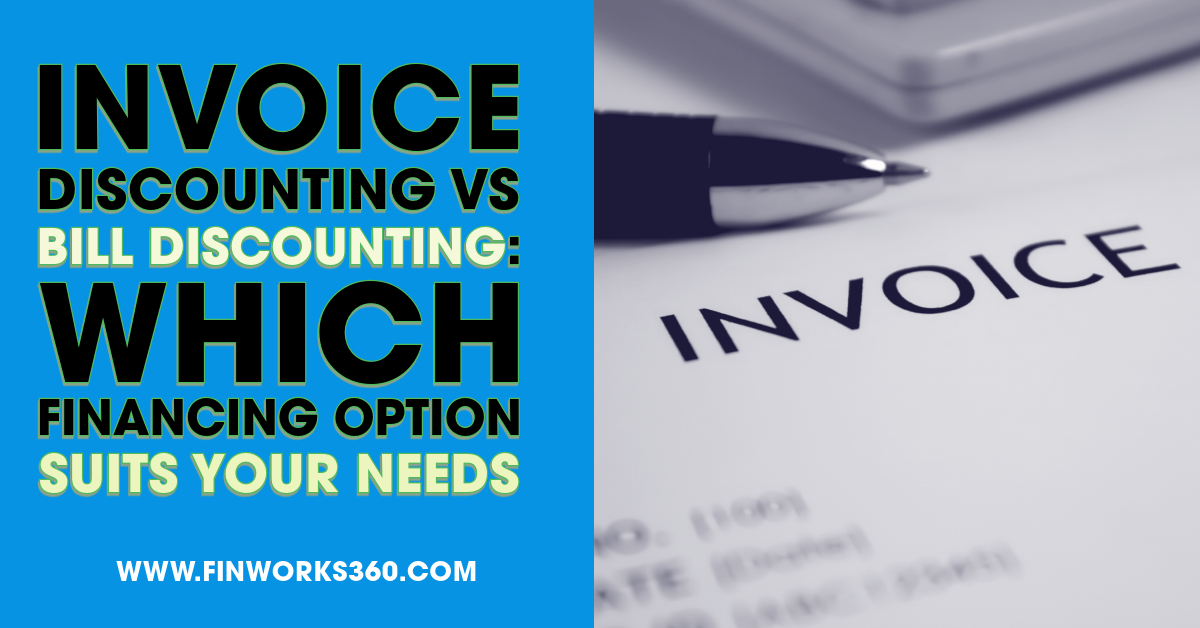In the dynamic landscape of Indian business finance, swift cash inflows would be critical for growth and stability. Two popular options for this finance among businesses are invoice discounting and bill discounting. While both of these activities raise short-term funds, enabling immediate improvement in cash flow, they have several distinguishing features suiting different business needs. In this post, we will see the key differences between invoice discounting and bill discounting so that you can better understand which one is best for you.
Understanding Invoice Discounting
Invoice discounting is a form of financial investment whereby a business raises funds against its unpaid invoices. This means that businesses can borrow some percentage of the value of an invoice upfront from a lender. This way, access to cash is achieved for the business before payment by the customer. The lender then directly collects the invoice amount from the customer at the due date.
Advantages of Invoice Discounting:
- Retention of Control: In invoice discounting, the control of the sale ledger stays with the business. This implies that no factoring arrangement is revealed to any of the customers, which becomes a way of keeping good relations.
- Flexible Funding: The companies can opt for the invoices to be discounted, and this provides them with flexibility based on their need for cash immediately.
- Quick Access to Cash: Since the paperwork is pretty limited, the funds are easily available normally within a period of 24 to 48 hours from when the invoices are submitted.
- Scalability: As the sales grow, the companies can begin to discount more and more invoices, hence raising their potential funding without additional borrowing.
Understanding Bill Discounting
Bill discounting, however, involves advancing against bills of exchange or promissory notes. Here, a seller issues a buyer a bill of exchange, which acts as a promise to pay a specific amount on a specific date. Companies may appeal directly to banks or financial houses to discount these bills to obtain finances before a particular due date.
Advantages of Bill Discounting:
- Less Dependence on Customer Credit: Bill discounting assists the business, particularly when the creditworthiness is varied for those customers. They can avail funds based on the reliability of the bill instead of any background associated with the creditworthiness of the buyer.
- Simpler Process for Receivables: Since the transaction is on a bill of exchange, the whole process of the bill can be reasonably unambiguous for terms and when payable.
- Better for Short-term Financing: The facility is more or less suited for the short term, and businesses require speedy cash for their operational expenditures.
- Potentially Lower Interest Rates: The interest on bill discounting can be lower than that of other financing arrangements if the issuer of the bill has a decent level of creditworthiness.
Key Differences Between the Two
Although both types of discounting help in improving cash flows, the differences in their reasons can help businesses understand which one suits them the most:
- Nature of Receivables: Invoice discounting is based on accounts receivable; bill discounting, however, is based on bills of exchange or promissory notes.
- Control Over Collections: Under invoice discounting, the firms hold all the control over collections from their customers. However, in the case of bill discounting, the financial institution might interfere more with the collection process.
- Purpose of Financing: Under invoice discounting, financing is usually applied for general cash flow requirements. On the other hand, under bill discounting, firms prefer financing for the short term.
- Client Interaction: The financing agreement is kept confidential with invoice discounting as the arrangement avoids publicizing the relationship with customers. With bill discounting, though the agreement may not necessarily be publicized, it might require more publicity since the financial institution is involved.
Choosing the Right Option for Your Business
This would ultimately be a choice that depends on your specific business needs and customer relationships, as well as your cash flow requirement.
- If you prioritize maintaining control over your receivables and want flexibility in choosing invoices to discount, invoice discounting may be the better option.
- On the other hand, if you seek quick cash against a bill of exchange and prefer a straightforward financing process, bill discounting could suit your needs better.
Conclusion
Invoice discounting and bill discounting are two financial solutions that are very effective and can provide much-needed liquidity. After considering your business situation and the cash flow of specific needs, you may make a decision that best supports your growth and financial health objectives.

